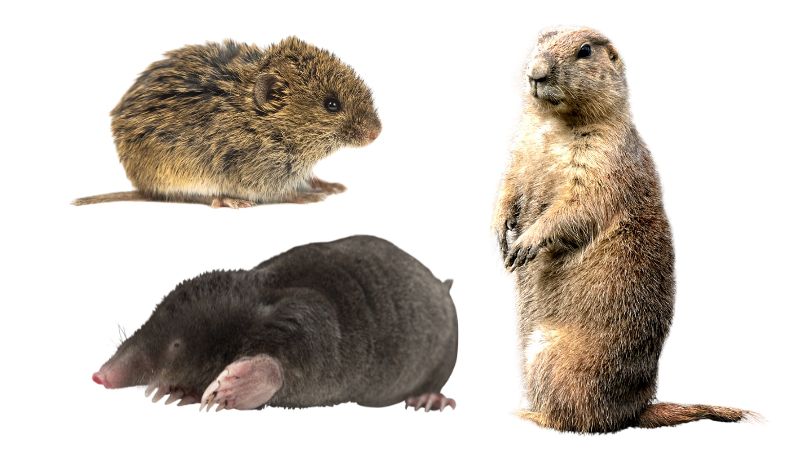Mastering Vole Bug Control: Comprehensive Insights on Infestation Prevention and Treatment Approaches
As homeowner and caretakers, the presence of voles can posture a significant obstacle to keeping the integrity of our exterior rooms. Recognizing the intricacies of vole actions is essential in establishing effective pest control approaches. By identifying the subtle indications of vole invasion beforehand, we can take proactive measures to avoid prevalent damages. In this conversation, we will check out the nuances of vole behavior, look into the identification of infestation indications, and uncover the most reliable prevention and treatment approaches. Keep tuned to discover the understandings that will certainly encourage you to grasp vole bug control and secure your residential or commercial property versus these elusive rodents.
Comprehending Vole Actions
Taking a look at the foraging patterns of voles offers useful understandings into their actions and environment choices. Voles, tiny rodents looking like computer mice, are herbivores understood for their underground tunneling tasks. By observing their foraging habits, scientists can obtain a better understanding of where voles choose to establish their habitats and the degree of their environmental effect. Voles are respected breeders, with a single female with the ability of creating numerous clutters in a year, making it important to understand their actions for efficient parasite control techniques.
Research indicates that voles exhibit discerning feeding habits, preferring tubers, roots, and seeds - vole pest control. This nutritional preference affects their foraging patterns, leading them to locations abundant in plant life and ground cover. Furthermore, voles are known to produce sophisticated tunnel systems for foraging and nesting purposes, showing a high level of versatility to their environments
Understanding vole actions is essential for carrying out targeted pest control steps that interrupt their habitat preferences and foraging activities. By examining their habits, specialists can create much more effective avoidance and therapy techniques to handle vole problems.
Identifying Indicators of Vole Infestation
Vole invasions can be found by acknowledging particular indicators of their presence in a location (vole lawn damage). One of the most common indications of a vole problem is the existence of surface paths.
One more crucial indicator of vole infestation is the presence of small burrow openings in the ground. In addition, voles are known to leave behind eaten plant stems, origins, and light bulbs near their burrow openings, indicating their feeding activity in the location.
In addition, vole droppings can additionally symbolize their existence (vole control). Vole droppings are tiny, brownish, and cylindrical fit, looking like grains of rice. Discovering these droppings along paths or near burrow openings can confirm a vole problem. By being alert for these indications, home owners can quickly address vole problems and prevent further damages.
Applying Aggressive Prevention Measures
To successfully alleviate the risks linked with vole infestations, residential or commercial property owners can proactively apply a variety of precautionary actions aimed at securing their landscapes and yards. Furthermore, maintaining garden locations tidy and minimizing clutter where voles might conceal or nest is crucial in decreasing their existence.
Moreover, utilizing natural vole deterrents like castor oil-based repellents or predator urine can function as efficient preventative measures. It is likewise suggested to routinely evaluate exterior areas for any kind of signs of vole task, such as paths or tunnel openings, to address possible infestations promptly. By taking on these proactive avoidance approaches, property owners can considerably minimize the possibility of vole damage and preserve the wellness and looks of their landscapes.
Effective Treatment Techniques
Integrating targeted trapping methods and utilizing approved rodenticides are essential components of effective therapy approaches for taking care of vole problems. Routine surveillance and upkeep are additionally crucial elements of successful treatment approaches to make sure that vole populaces are kept under control. By incorporating capturing, rodenticides, habitat modification, and consistent surveillance, efficient vole bug control can be attained.

Tracking and Upkeep Tips
Keeping a systematic timetable for surveillance and performing regular maintenance activities why not try these out is essential to maintain the efficiency of vole pest control steps. Normal surveillance permits the very early detection of vole activity, making it possible for punctual intervention before problems intensify. To efficiently monitor vole populaces, strategically positioned catches can be used in vole runways or near burrow entries. By on a regular basis checking these catches, homeowner can gauge the level of vole task and readjust control approaches appropriately.
In addition, maintaining a neat and well-kept landscape is necessary in vole avoidance. Clearing up away particles, such as stacks of wood or thick plant life, removes potential vole habitats. Regularly trimming and mowing yards greenery aids reduce vole concealing places and lessens their access to food sources.

Conclusion
In conclusion, understanding vole pest control needs a strong understanding of vole habits, the ability to recognize signs of invasion, applying aggressive prevention procedures, reliable treatment techniques, and constant surveillance and visit the site maintenance. By taking a detailed strategy to vole control, individuals can properly handle and prevent infestations, ultimately securing their residential or commercial property and surrounding environment from damages brought on by these tiny rats.
In this discussion, we will certainly discover the nuances of vole actions, delve right into the identification of infestation signs, and reveal the most effective avoidance and therapy techniques.Incorporating targeted trapping techniques and utilizing approved rodenticides are vital elements of efficient therapy techniques for taking care of vole problems. To efficiently check vole populaces, tactically positioned traps can be utilized in vole paths or near burrow entrances. Examining and repairing any kind of damages to these structures guarantees that that site vole control remains effective in safeguarding properties from problems. By incorporating these monitoring and maintenance methods right into a thorough vole bug control plan, individuals can effectively take care of vole populations and protect their residential properties from damage.